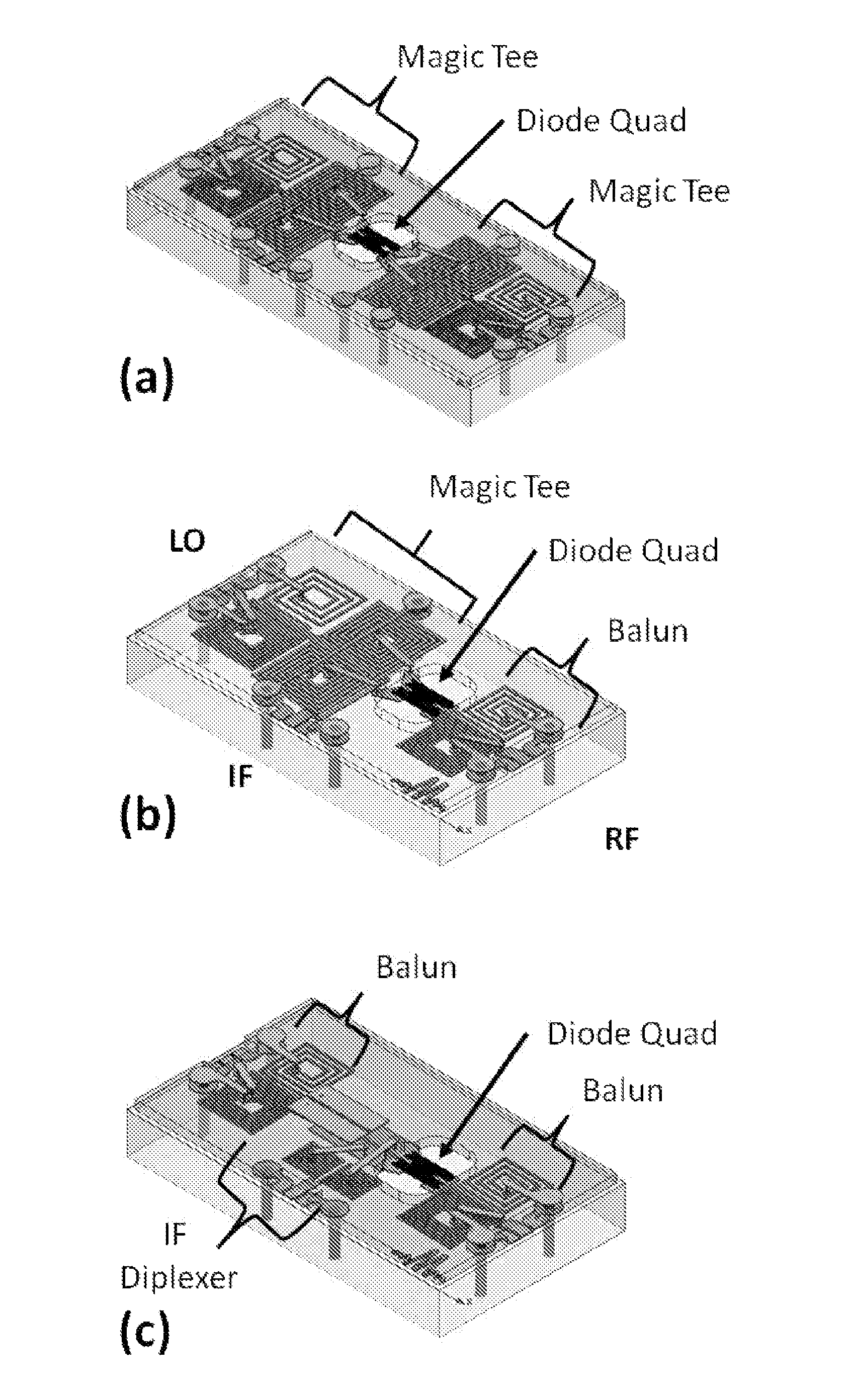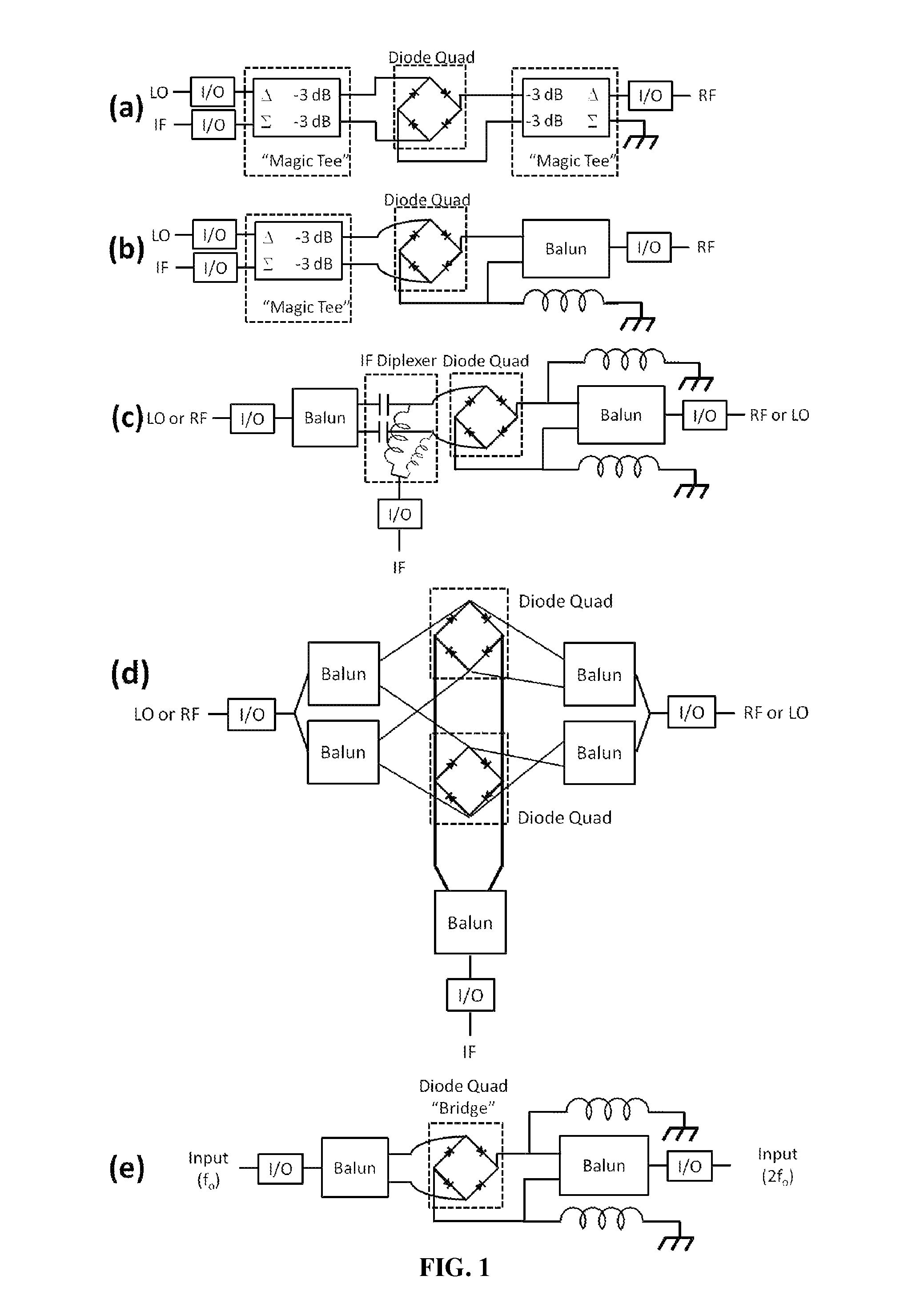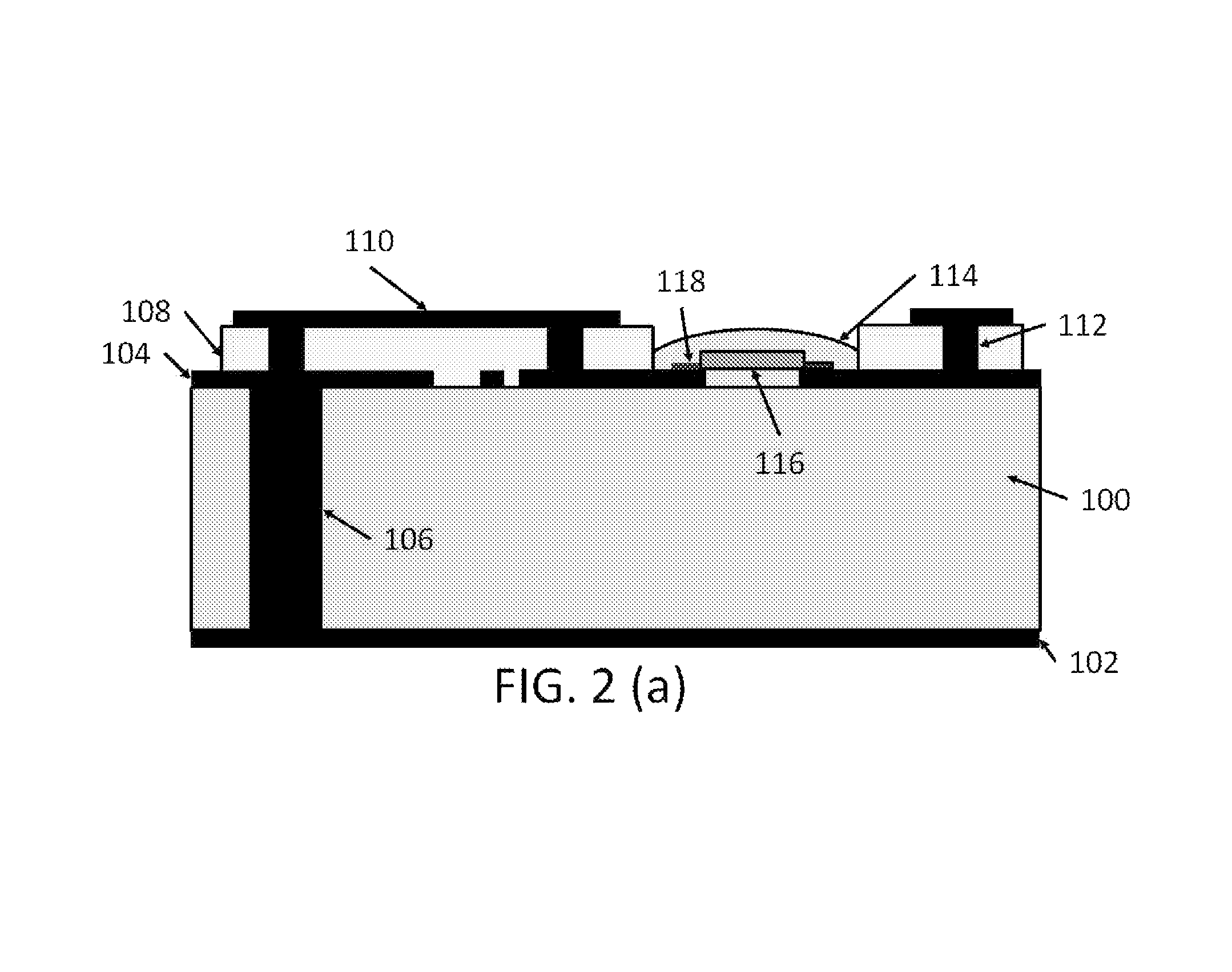Mixer fabrication technique and system using the same
a technology of mixers and fabrication techniques, applied in the field of frequency mixers, can solve the problems of inability to scale up to high-volume automated assembly, and inability to achieve the bandwidth of hybrid mixers. achieve the effect of high frequency limit, superior bandwidth capability, and superior to hybrid mixers
- Summary
- Abstract
- Description
- Claims
- Application Information
AI Technical Summary
Benefits of technology
Problems solved by technology
Method used
Image
Examples
Embodiment Construction
[0019]It is to be understood that both the foregoing general description and the following detailed description are exemplary. As such, the descriptions herein are not intended to limit the scope of the present invention. Instead, the scope of the present invention is governed by the scope of the appended claims.
[0020]Balanced mixers, whether hybrid or monolithic, are constructed by connecting integrated circuit (IC) devices, for example, Schottky diodes or field effect transistors (FETs) to surrounding passive circuitry. The surrounding passive circuitry most often consists of various combinations of elements, for example, inductors and capacitors, balanced transmission lines, Magic Tee couplers, and balanced to unbalanced (balun) converters. FIG. 1A illustrates a double balanced mixer circuit with two Magic Tee circuits. FIG. 1B illustrates a double balanced mixer circuit with a Magic Tee circuit on the local oscillator (LO) and intermediate frequency (IF) side and a balun on the ...
PUM
| Property | Measurement | Unit |
|---|---|---|
| thickness | aaaaa | aaaaa |
| thickness | aaaaa | aaaaa |
| thickness | aaaaa | aaaaa |
Abstract
Description
Claims
Application Information
 Login to View More
Login to View More - R&D
- Intellectual Property
- Life Sciences
- Materials
- Tech Scout
- Unparalleled Data Quality
- Higher Quality Content
- 60% Fewer Hallucinations
Browse by: Latest US Patents, China's latest patents, Technical Efficacy Thesaurus, Application Domain, Technology Topic, Popular Technical Reports.
© 2025 PatSnap. All rights reserved.Legal|Privacy policy|Modern Slavery Act Transparency Statement|Sitemap|About US| Contact US: help@patsnap.com



